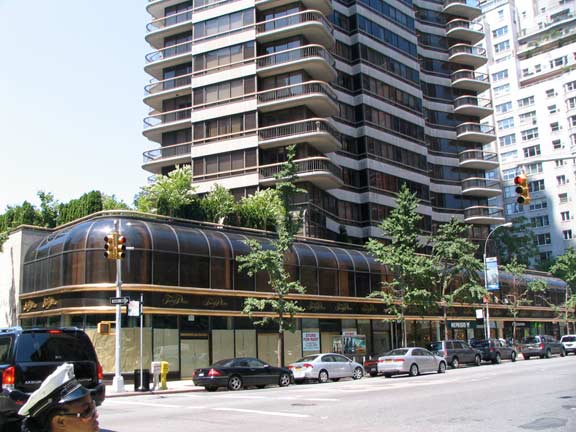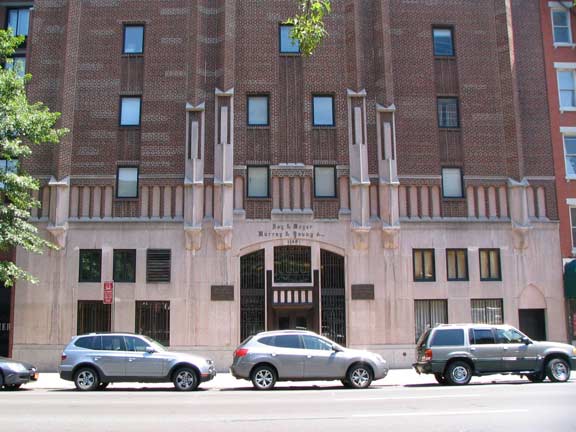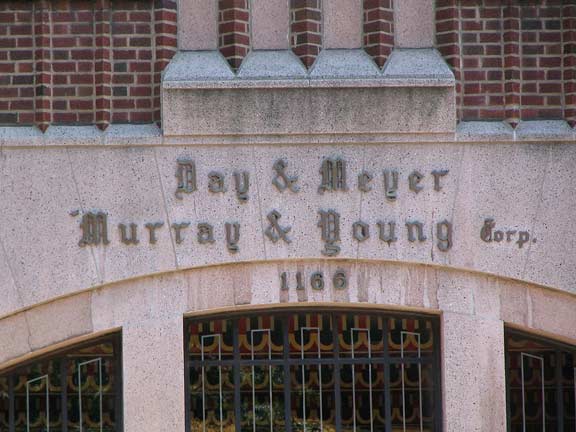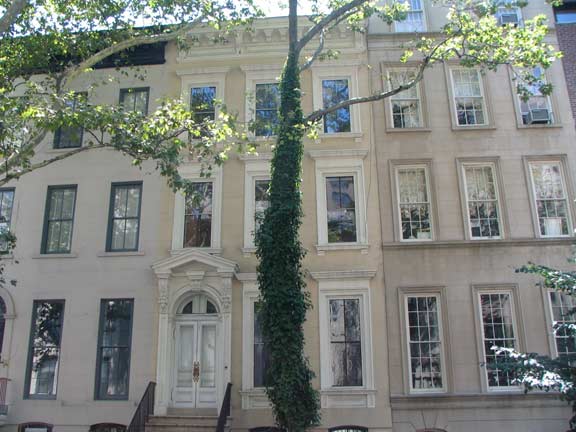Now, I have a problem here because I have discovered a wonderful (but HUGE) post on this area on a website called "Forgotten New York"- I am going to try to trim down what they have there, it goes way beyond what I am interested in, even though for someone with an interest in the history of this very important area of the Upper East Side as a ritzy place developing as New York grew it is ALL interesting..
So let's see if I can give you just some of it without this becoming overwhelming...
Forgotten NY has always been a bit sparse on Forgotten aspects of the Upper East Side. There has always been apractical side to this, as the Long Island RR brings me into Penn Station, whose various subway lines serve the west side of Manhattan, Upper and Lower. To get to the East Side I have to switch at Woodside to the #7, then change at Grand Central for the #4, 5, 6, the Lexington Avenue lines. Do-able,but extra steps. Regardless, I think I will be spending more time on the East Side despite the subway construction on 2nd Avenue (whoich is being done in tandem with a Long Island RR connection to Grand Central).
While dragging myself through the ungodly heat of the typical NY summer (to me, ungodly is 75 degrees and up) I reached the Treadwell Farm Historic District, which is made of of two blocks of East 61st and 62nd Streets between 2nd and 3rd Avenues.
Members of the Tre(a)dwell family (both spellings appear in documents) figure in two disparate NYC regions. In 1815, Adam Treadwell, a fur merchant , and Stephen Thorne, Jr. purchased land on what later became East 61st and 62nd from the heirs of Peter Van Zandt. Treadwell later bought Thorne’s share from his relatives after Thorne’s death. A younger brother, Seabury Treadwell, owned what is now the Merchant’s House Museum on East 4th Street in the East Village.
During Adam Treadwell’s lifetime, this property was indeed farmland, but after his death in 1852 his family sold the land in parcels to potential developers. The handsome rowhouses that today make up the historic district were built between 1868 and 1876.

Before entering the historic district from East 61st and 3rd Avenue, take note of the 1980s-era (I think) high rise apartment towers, and a curved glass 2-story building hosting storefronts (which, in the recession, seem unoccupied.)

This isn’t part of the landmarked district , but this finely wrought carven pair of street signs is on the building on the NE corner. The letters and numbers almost resemble medieval blacklettering you find on holy texts.
East 61st Street



From the Treadwell Farm Landmarks Preservation Commission Report (the district was landmarked early on, in 1966, and no significant alteration can be made to the building fronts without special permission). Details regarding most of the the buildings in the District can be found there.
The architectural importance of the Historic District lies in its consistent!y residential character, its uniform cornice height, and in the style of its buildings and care with which the buildings are preserved. Most of the houses wore constructed in groups as speculative real-estate ventures and have had their facades altered since their construction but, generally, they have retained a uniform character. Some of the architects are known, and they include such notables as Richard Morris Hunt, Samuel A. Werner, James W. Pirrson and George F. Pelham.
This residential neighborhood is notable for its tree-lined streets and the generally uniform height of its houses. What is most striking is the uniformity of the architecture of these rows of individual town houses. This may be accounted for by the. fact that they were mostly built at the same period and that they are all beautifully maintained by their present owners. Although many have had their stoops removed to provide new entrances at former basement level, most of them have retained attractive iron areaway railings. Planting and flower boxes at windows are everywhere in evidence further enhancing the atmosphere of greenery.
The style of architecture most prevalent in the Eighteen ‘Sixties and ‘Seventies, when so many of these houses were built, was that of the formal French Second Empire, classical and dignified. It will most generally be remembered by the brownstone with its pedimented arched doorways and framed windows. Although the trim of doors and windows has often been simplified by subsequent alterations, the fine proportions and much of the detail remain an asset to this dignified neighborhood.

Looking west on East 61st. Note the contrast between the uniform heights of the Treadwell buildings and the high rises beyond. This is not a bad thing. Different styles of architecture, when seen together, can provide a vitality to both, as long as the styles are not too jarring.
When you get to 2nd Avenue and look south, you’re greeted by signs welcoming motorists to the “Ed Koch Queensboro Bridge.” I know they don’t pay for these signs by the letter — maybe they do! but shouldn’t it be the “Edward I. Koch” Queensboro Bridge? The bridge now has three names, as Manhattanites call it the 59th Street Bridge. The colorful Mayor Koch served from 1978 to 1990, and even in his 80s, is still a powerful voice in NYC politics.
This huge painted sign reading FIREPROOF WAREHOUSE, Day & Meyer Murray & Young Corp. PORTOVAULT STEEL VAULT SHORTAGE is prominent when looking north along 2nd Avenue and when you are riding the tramway to Roosevelt Island. The letters are rendered in ecclesiastical blackletter, as well as serif and sanserif capitals.


The sign is painted on the side of the warehouse it advertises, on 1166 2nd Avenue. The building still hosts self-storage and boasts Art Deco touches contemporary with its deate of construction in 1928.
East 62nd Street
Circling back on the northern part of the District, here’s a sampler of the well kept, historic houses.



Through the years, the “Farm” has attracted big names in journalism, politics, architecture, publishing and showbiz to acquire homes on the two blocks, such as Walter Lippmann, Kim Novak, Montgomery Clift, Eleanor Roosevelt, Christopher LaFarge and Paul Gallico.
9/21/11




No comments:
Post a Comment
Please leave a comment-- or suggestions, particularly of topics and places you'd like to see covered